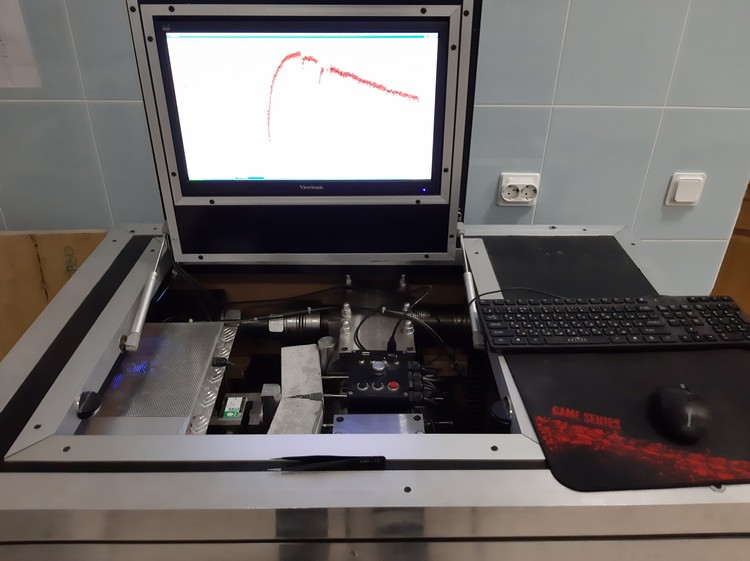Nanostructural modification of construction materials and other studies of SPbGASU scientists
What happens if we add nanocellulose to cement composites? How to compensate for shrinkage deformations of repair mortars? Can characteristics of construction materials be controlled by nanostructural modification? SPbGASU scientists, members of the North-West territorial branch of RAASN, are working on these issues.
Fiber concrete reinforced with synthetic macrofiber
Visualization of the structure of nanocellulose, performed using a scanning electron microscope TESCAN VEGA 3SEMAdministrative building with a ventilated facade made of fiber cement reinforced with cellulose fibers
Research is carried out within the framework of the scientific school "Nanostructural modification and dispersed reinforcement of building products and structures", which is led by the head of the Department of Technology of Building Materials and Metrology Professor Yuri V. Pukharenko, Dr. of Engineering, Corresponding Member of the RAASN. The scientific school unites teachers from the SPbGASU Department of Technology of Building Materials and Metrology and the Department of Reinforced Concrete and Masonry Constructions.
Associate Professor of the Department of Technology of Building Materials and Metrology, Vadim D. Staroverov, Candidate of Engineering, spoke about the main lines of research of V. Pukharenko’s school:
– In accordance with the Program of Fundamental Scientific Research of the Ministry of Construction of Russia and the RAASN, we are solving the problems of effective use of reinforcing fibers of various types, sizes and shapes to improve the functional characteristics of building structures. The research results in May-June 2020 were published in the journals Construction Materials and Construction and Reconstruction included in the List of journals recommend by the Higher Attestation Commission. The high convergence of the calculated characteristics with experimental data indicates the possibility of their application in the process of further development of methods for calculating and designing fiber-concrete structures reinforced with polymer fibers.
✔ Another area of research by SPbGASU scientists is nanomaterials and their effect on the structure and properties of cement and gypsum composites. Research results prove that it is possible to control the characteristics of building materials through nanostructural modification. New scientific data have been published in the journals Bulletin of Civil Engineers and the Materials Science Forum (part of the Scopus database).
Nanocellulose, a new material for the construction industry, also is in the focus of scientists’ interest. To date, it has been proven that the low concentrations of nanocellulose in cement composites contribute to the formation of a denser and more homogeneous structure. At the same time, the strength of the composites modified in this way on 28th day exceeds the strength of control (without nanocellulose) composites by 1.6 times. Thanks to nanocellulose, water absorption is reduced and the shrinkage of cement stone is less.
The results of scientific research are published in № 7 of the Construction Materials journal and have already found application in the manufacture of products of small architectural forms in St. Petersburg.
SPbGASU scientists aim to improve the safety and quality of building materials, products and structures. At present, a number of articles have been published, including in peer-reviewed journals, devoted to improving the system of criteria for assessing the quality of construction materials. At the same time, feedback was sent to the authors - developers of new regulatory documents (GOSTs) with relevant recommendations and proposals to clarify their provisions.
It should be noted that specialists of TBM&M department regularly take part in the work of Technical Committees #144 "Construction Materials and Products" and #465 "Construction" under the Federal Agency for Technical Regulation and Metrology.
Also, specialists of the Department of TBM&M develop solutions of the problem of elimination of defects when repairing building structures and compensation of shrinkage deformations of repair compositions. A more exact and economically expedient way of automatic definition of shrinkage simultaneously for a series of investigated samples of various building materials that positively distinguishes it from known and widely applied methods is offered. At the same time, specifically for this method, the software tools allowing to carry out researches in an automatic mode that levels a problem of “the human factor” at reception and processing of results of measurements have been developed.
At present, the authors of this invention are working on patenting their invention.
{gallery name="Староверов 082020"}
It should be noted that the revenues from the work ordered by construction companies in May - July, for which the research was conducted, amounted to about three million rubles. In the difficult for the whole world period, SPbGASU scientists do not stop their dynamic pedagogical, creative and scientific activities.
Text: Tatyana Petrova
✔ Learn more about the scientific schools of the University





